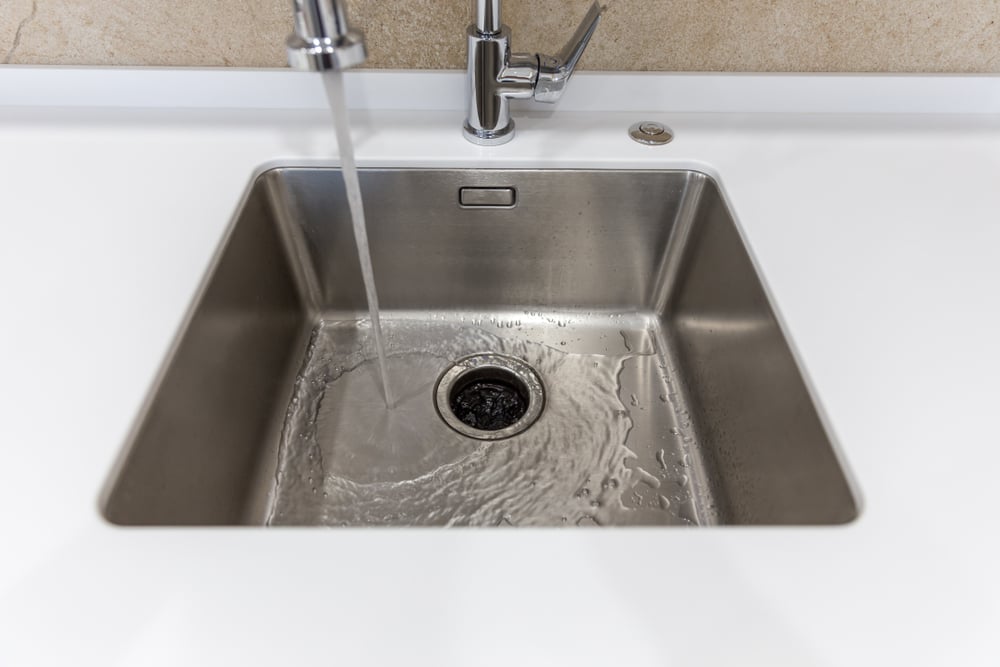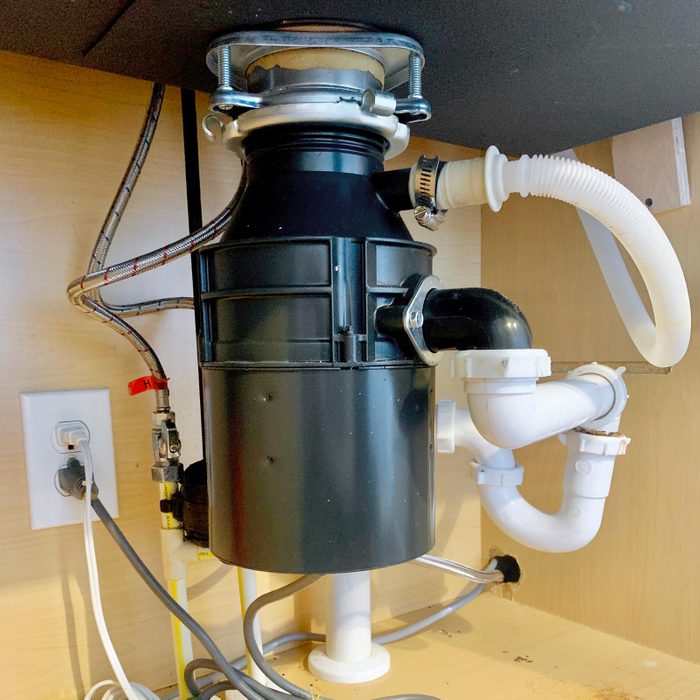Rapid Fixes for a Dripping Garbage Disposal
Rapid Fixes for a Dripping Garbage Disposal
Blog Article
What're your concepts about How to fix a pretty consistent leak from my garbage disposal?

Garbage disposals are vital kitchen area home appliances that help in getting rid of food waste efficiently. However, a leaking garbage disposal can be a frustrating and unpleasant issue to deal with. The good news is, several leaks can be fixed conveniently with a couple of easy steps. In this post, we will review how to deal with a leaking waste disposal unit properly.
Introduction
Waste disposal unit are installed under kitchen area sinks and are designed to shred food waste into smaller sized items, allowing it to go through the plumbing system quickly. While these tools are generally reputable, leakages can take place over time due to damage, loosened links, or damages to the device.
Usual Root Causes Of Leakages in Rubbish Disposals
Worn Seals and Gaskets
Seals and gaskets play an essential function in preventing water from dripping out of the waste disposal unit. In time, these elements can deteriorate, leading to leakages around the disposal unit.
Loose Connections
The connections between the waste disposal unit and the pipes system can become loose over time, creating water to leak out during procedure.
Cracks or Openings in the Disposal System
Physical damages to the garbage disposal, such as splits or holes in the real estate, can likewise cause leaks.
Recognizing the Source of the Leakage
Prior to trying to repair a dripping garbage disposal, it is important to identify the source of the leakage. This can generally be done with aesthetic evaluation or by carrying out straightforward tests.
Visual Evaluation
Check the waste disposal unit device carefully for any type of indications of water leak. Pay very close attention to locations around seals, gaskets, and link factors.
Checking for Leakages
One method to check for leaks is by running water with the disposal unit and looking for any type of visible indications of leakage.
Devices and Products Needed for Taking Care Of a Leaking Garbage Disposal
Prior to starting the repair procedure, gather the required devices and products, including a screwdriver, adjustable wrench, plumbing technician's putty, replacement seals or gaskets, and epoxy or patching material for fixing fractures or holes.
Step-by-Step Guide to Repairing a Dripping Garbage Disposal
Turn Off the Power
Prior to attempting any type of repairs, make certain that the power to the garbage disposal system is turned off to avoid the threat of electrical shock.
Locate the Leak
Recognize the specific place of the leakage and identify the cause.
Tighten up Links
Make use of a wrench to tighten up any loose connections in between the disposal device and the pipes system.
Change Seals or Gaskets
If the leakage results from used seals or gaskets, get rid of the old parts and change them with brand-new ones.
Patching Cracks or Holes
For splits or openings in the disposal device, use epoxy or a suitable patching material to seal the damaged area.
Evaluating the Waste Disposal Unit After Repair
Once the repair is full, test the garbage disposal by running water through it to ensure that the leakage has actually been settled.
Preventive Upkeep Tips to Stay Clear Of Future Leakages
To stop future leakages, it is important to carry out regular upkeep on your waste disposal unit. This consists of keeping it clean, staying clear of placing non-food items or hard objects down the disposal, and occasionally checking for leakages or various other problems.
Conclusion
To conclude, dealing with a leaking garbage disposal is a reasonably straightforward procedure that can be finished with basic tools and materials. By complying with the actions laid out in this article and practicing preventative upkeep, you can maintain your waste disposal unit in good working problem and stay clear of pricey fixings in the future.
HERE’S HOW TO FIX YOUR GARBAGE DISPOSAL
WHAT TO DO IF SOMETHING IS STUCK IN YOUR GARBAGE DISPOSAL
If the impeller won’t turn, there’s probably something stuck in the disposal. It could be a steak bone or peach pit, although plumbers report pulling all sorts of inappropriate objects out of disposals, such as bottle caps or aluminum foil. Make sure power to the disposal is off, and look inside to see if you can see the source of the jam.
Never stick your fingers in a disposal. Pull out anything you see with tongs or pliers.
If the disposal still won’t work, it may be time to call a plumber or consider buying a new disposal. GEM Plumbing & Heating is here for all of your garbage disposal needs.
WHAT TO DO IF YOUR GARBAGE DISPOSAL DRAIN IS CLOGGED
Take everything out from underneath your sink and put a bucket or other container under your disposal to catch any water that drains out. Disconnect your disposal from the power supply. If it’s plugged into a wall outlet, unplug it. If it’s hardwired into an electrical box, go to the electrical panel and turn off the breaker for the disposal. Pour ¼ cup of baking soda into the drain, followed by ½ cup of white vinegar. Give the solution a few minutes to fizz and do its work. Look into the disposal with a flashlight to see if you can see an object that might be causing the clog. If you see it, remove it using tongs or pliers. MORE TIPS ON DEALING WITH A CLOGGED GARBAGE DISPOSAL
Never use drain cleaner in a garbage disposal. It can damage the plastic parts inside the disposal. You can also be splashed with the caustic liquid while working to clear the clog. Beware! Never stick your fingers into a garbage disposal. Trust us — not a good idea. In many instances, your dishwasher drains through your garbage disposal. This allows the disposal to grind any large food particles that may be drained out of your dishwasher. There are some jurisdictions, however, where the plumbing code prohibits such a connection. WHAT TO DO WHEN YOUR DISHWASHER DRAINS THROUGH THE DISPOSAL
Run some water in the sink so your plunger has at least a ½-inch of water to create a seal and plunge vigorously up and down several times. You may need to repeat this several times. Run hot water down the drain to clear any residue that remains.

We had been shown that report on Why Is through an acquaintance on a different web blog. Be sure to set aside a second to share this article if you enjoyed reading it. Thanks a bunch for your time. Don't forget to check up our website back soon.
Click Here Report this page